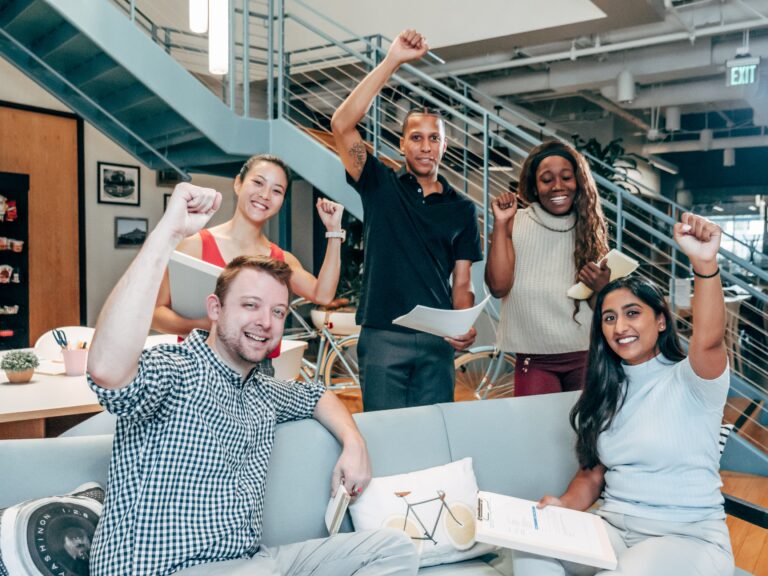The definitive guide to the employee experience: what really matters
“At the end of the day, all businesses are about people first — because the only way we can build genuinely successful businesses is to build lasting relationships inside and outside the company.”
Mary Barra, CEO General Motors
Employee experience is a buzzword. Every technology vendor and consulting firm will tell you they have the solution to this problem, and CEOs are talking about it too. The business case is clear: Employees are in charge today, and if you don’t give them what they need, they will simply take their talents elsewhere. With unemployment rates approaching pre-pandemic lows and 40% of workers looking to change employers this year, your company needs to do more than pay well. Study after study shows that investing in employees pays off beyond engagement – happier customers, better products, higher profitability, fewer safety issues, more innovation, to name a few. Fortune 500 CEOs such as Microsoft’s Satya Nadella, Unilever’s Alan Jope and GM’s Mary Barra all cite the employee experience as critical to business success.

Becoming Best Place to Work: A moving target
Best Place to Work lists abound, and we compared four of them: Great Place to Work: World’s Best Workplaces; Forbes’ The World’s Best Employers; Fortune 100 Best Companies to Work For; The result: only six out of 1,020 companies were represented on all four lists (or 0.5%). If you don’t know how good you are, how will you ever get there?
So we decided to explore this issue in collaboration with Microsoft. Based on hours of discussions with our Big Reset groups – where executives from more than 1,000 companies gather for what participants have come to call “Friday HR Date Night” – we conducted an extensive enterprise survey, with 981 companies from around the world responding and examining 83 employee experience (EX) practices, from work design to management practices to workplace solutions and cultural strategies, while also considering technology. Our findings were fascinating.
The irresistible organization: a framework for EX.
A great employee experience is about the work we do, the teams we work on, our direct reports, and how they care for and support us. It’s also about our health and well-being, the digital, physical and cultural workplace, how we grow and develop, and how much we trust the company.
Our Framework for Employee Experience defines what we call an “irresistible organization” and is a tool for understanding the elements, dimensions and practices of EX.
Companies can be categorized into four different levels of EX maturity, with level 1 having the lowest impact and level 4 having the highest. These levels are found across all industries, regions and company sizes (although there are some differences, with innovation-dependent industries performing much better).
Only 20% of the companies we studied reached a high level of maturity, where employees are truly seen as individuals who drive sustainability and success through innovation.
We know that employee experience is important, and that moving from one maturity level to the next is important for the company, the employees, and the innovation outcomes. But it’s also a lot of work and often takes years when working on culture and leadership issues, HR programs and supporting technologies. Implementing the most impactful practices can help you achieve that goal.
Why the right EX practices really matter.
So which practices are most important? We’ve identified fifteen practices that have a towering impact on business, workforce, and innovation outcomes. We call them “Essentials” because without them, very little else matters. When they are in place, many of the typical investments work well. But when they don’t, a focus on “digital tools,” “competitive compensation,” or “EX programs” simply doesn’t do much good.
What really matters in the employee experience is fostering trust, a culture of helping, caring for each other, creating a sense of belonging and equality, investing in people in any business climate. And HR skills and the right technologies are also critical.
Companies that adopt these strategies achieve much better results in terms of business, people and innovation.
Six surprising truths about EX
In evaluating all the practices, strategies and tools that support employee experience, we found six key insights that also serve to debunk six myths about employee experience.
Myth 1: EX is all about technology.
Truth: While technologies are important, gadgets and cool tools alone aren’t enough to inspire people to be and do their best.
Myth 2: Managers are the key to a great employee experience.
Truth: Sure, managers are important, but they are not the sole carriers of your culture or the environment you create; leaders have more influence.
Myth 3: Helping people relieve stress is at the heart of EX.
Truth: Yes, employee well-being needs to be a priority – but a yoga class after a 60-hour work week isn’t going to do much to relieve your employees’ stress.
Myth 4: If we pay them, they will come (and stay).
Truth: You can’t buy being a great place to work. We don’t look to our paycheck for the daily inspiration to do the work of a lifetime.
Myth 5: If employees stay healthy, they can be productive.
Truth: The pandemic has shown us that physical health and safety are critical – but psychological safety is even more important.
Myth 6: We can easily transfer customer experience practices to EX.
Truth: Your customer experience can never be better than your employees’ experience, but EX goes deeper than CX because employees vote for you with their lives.
“It’s the soft things that are the hard things.”
Companies from around the world and across industries – Deutsche Telekom, IBM, Kraft Heinz, Microsoft and Unilever – told us about their challenges, lessons and strategies for creating an irresistible experience.
The important role of technology
Although EX is not just about technology, the right technologies are important to support and scale EX practices. We’ve found which technology practices correlate most strongly with different maturity levels.
The most effective technology practices – analyzing people and taking action, advanced knowledge tools, and adaptive learning tools – help identify barriers and personalize the experience, enable people to help each other by contributing to the learning of others, and create an environment where everyone can grow.
Time for people-centered leadership
Employee experience can be a slogan used in marketing by technology vendors or lip service by CEOs to win the battle for talent. Most important are the themes of trust, transparency, culture and inclusion. How much do you invest in these topics? Who is focusing on these issues in the first place? How do you measure success?
Above all, leadership is critical. Without the right attitude, skills and behaviors from leaders, any progress at EX will be short-lived and unsustainable. There is a decision to be made. Do you embrace business-centric leadership, where the business comes first and the people come second, or do you enable people-centric leadership, where the people come first and the business comes second? People-centric leaders build trust in the organization, communicate transparently, behave with integrity, are authentic, and model the culture of helping others.
An important piece of advice to manage and improve your business by the best digital HR platform, icehrm.com . Visit our site to access to the digital platform all the HR functions for your business.








